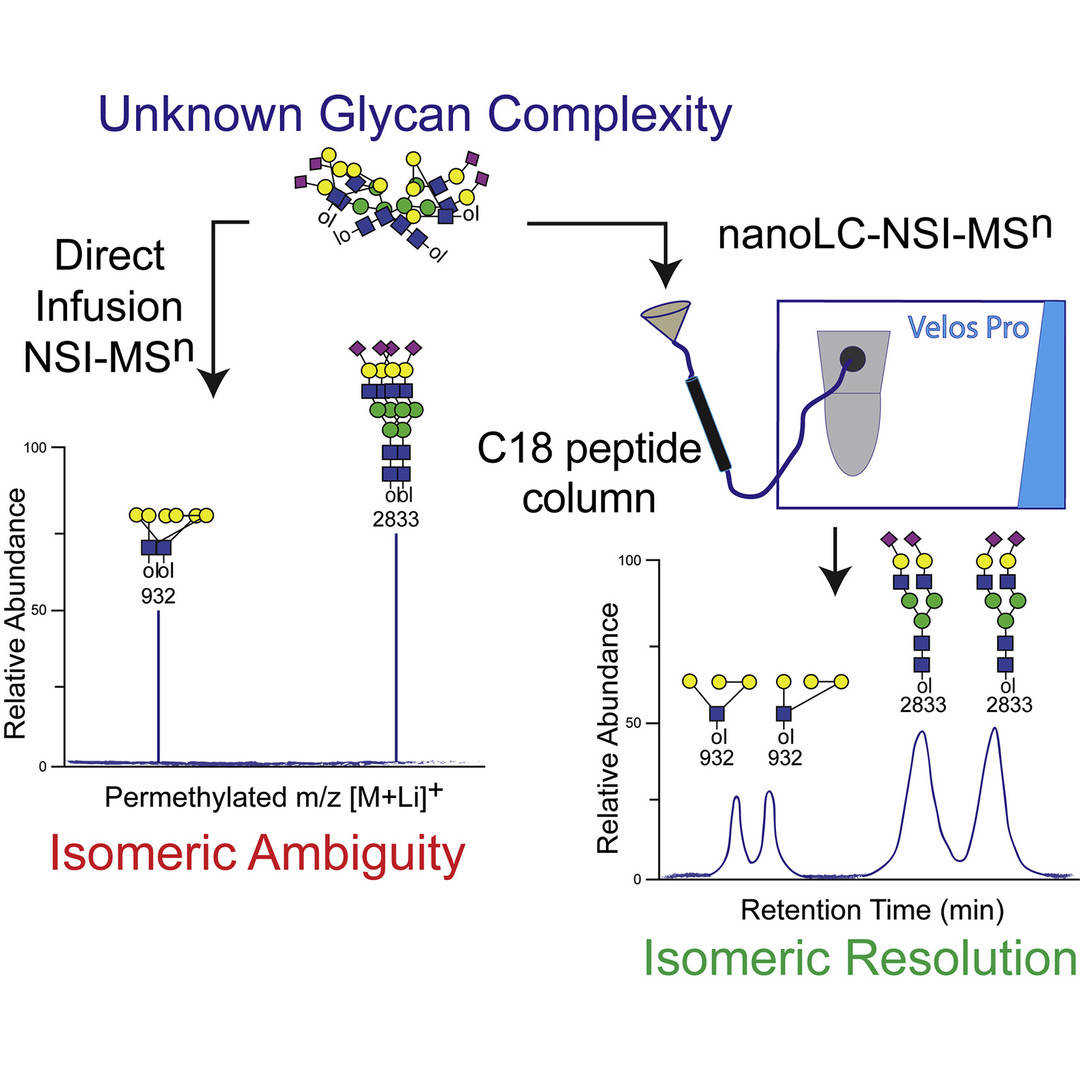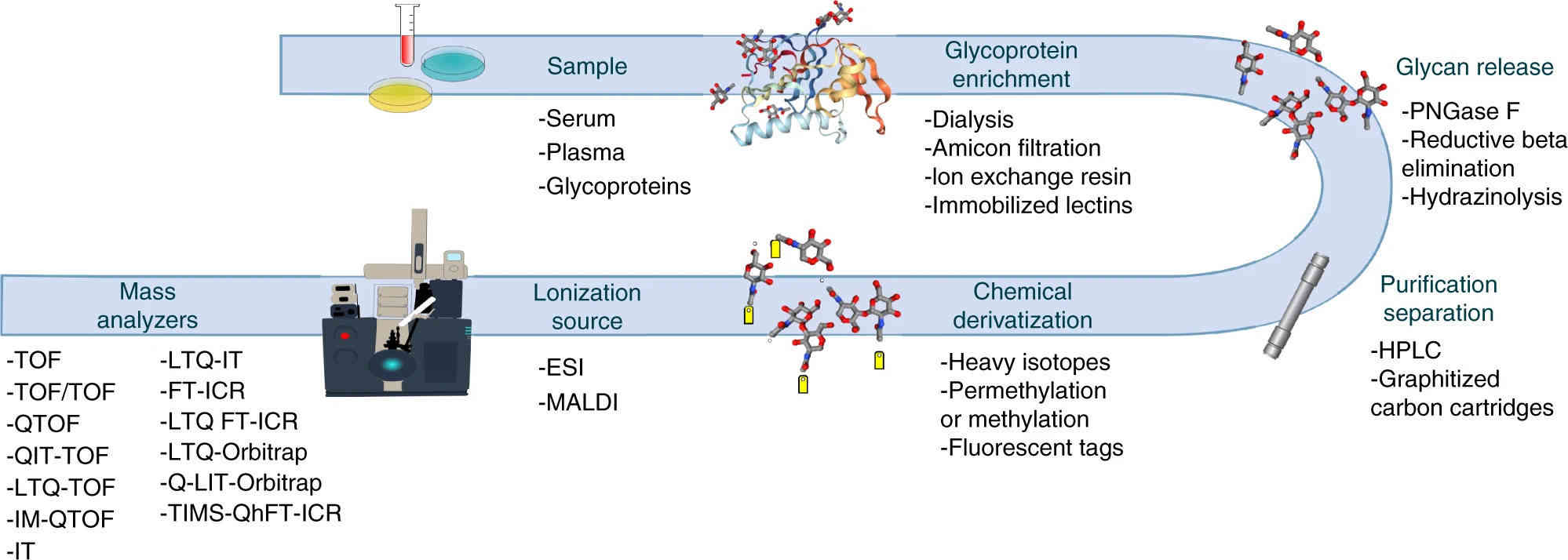Glycan Profiling of Various Glycoprotein
Glycan profiling is a new research method based on glycomics, which can be widely applied for various glycoproteins or glycans analysis. Based on advanced glycomics related technology, Creative Biolabs has gained a good reputation and significant knowledge in glycan profiling of various glycoproteins. We are pleased to provide high-quality glycan profiling service for global customers to facilitate their related researches.
What Is Glycan Profiling?
Glycan profiling is a novel method for structural analysis of glycans or glycoproteins, which is characterized by achieving the essential information of target glycans or glycoproteins in a rapid, sensitive, and high-throughput manner. Glycan profiling can be carried out in two different ways:
-
Liberated glycomics: Characterizing glycans liberated from glycoproteins, cells, and tissues, which is dominant in glycan profiling. Glycans are usually liberated from the glycoproteins prior to analysis and subjected to fluorescence labeling for detection. It is a pity that some information such as attachment sites or spatial heterogeneity may be lost.
-
Intact glycomics: Targeting glycoproteins or those extracted from cells and tissues directly, which is more suitable for rapid analysis of glycoproteins. But precise or detailed information of glycan structures can’t be figured out.
 Fig.1 A strategy for separating glycans.1, 3
Fig.1 A strategy for separating glycans.1, 3
Why Glycan Profiling?
Protein glycosylation, the most posttranslational modification, is the process the carbohydrate is attached to the protein. Most proteins in humans are in glycosylation form, which plays a significant role in a variety of biological activities. Glycosylation or glycoprotein analysis is challenging due to the complexity and the isobaric nature of attached glycans. To fully understand the functional roles of glycans and glycoproteins, glycan profiling is a good choice for glycoprotein analysis, even for glycoprotein biomarkers research in diverse diseases. For glycan profiling, four key technologies should be introduced firstly: Multi-dimensional liquid chromatography, Mass spectrometry, Capillary electrophoresis, Lectin Microarray.
 Fig.2 Procedure for glycan analysis.2, 3
Fig.2 Procedure for glycan analysis.2, 3
Technologies for Glycan Profiling in Creative Biolabs
As a comprehensive customer service provider, Creative Biolabs possess an abundant technology platform for glycan profiling of various glycoproteins. Based on these advanced technologies, we can provide our customers with a perfect solution to improve your programs by rapid glycoform analysis of your samples.
Glycan Profiling of Various Glycoproteins in Creative Biolabs
With the development of Glycomics, glycan profiling has been applied for various glycoproteins researches, such as simply structural identification, functions elucidation, and glycoprotein biomarkers research, etc. Here, we would like to introduce some studies in glycan profiling, as follows:
Ebolaviruse, a subclass of filoviruses belong to the genus Ebolavirus, causes Ebola virus disease characterized by a severe and often fatal hemorrhagic fever in humans and other mammals. Glycoproteins GP1, 2 is the only ebolavirus surface protein, which is extensively glycosylated transmembrane protein. N- and O-linked glycoprofiling are chosen to research GP1, 2 glycoproteins of ebolaviruses due to limited information on glycosylation was known.
Cetuximab, approved by FDA, is a therapeutic recombinant monoclonal antibody (mAb) drug which has been applied for clinical treatment of cancers for many years. Development of biosimilars of cetuximab is becoming a trend due to the expensiveness of the production, lucrative targets, and the coming off-patent protection. Thus, a comprehensive glycan profiling of a biosimilar candidate of cetuximab is needed.
Concanavalin A (ConA) is a plant lectin that extracted from jack beans, which can bind to various glycoproteins with a wide range of biological activities and applications. Comparative profiles of ConA-binding glycoproteins have been performed to figure out potential roles in the pathophysiology of liver disease.
Cell surface glycoproteins mainly affect some fundamental bioactivities associated with cell-cell interactions, cell adhesion, and cell migration. Most of present studies about cell surface glycoprotein have been conducted to elucidate the structures and functions on lymphocytes and cancer cells, while cell surface glycoprotein profiling information is so limited.
As one glycoprotein hormones, oLHalpha or luteinizing hormone plays a critical role in the vertebrate reproductive system. Luteinizing hormone serves as a transporter convey the integrated central information from the hypothalamic-pituitary complex toward gonads in both males and females. oLHalpha is a perfect candidate for glycoprotein profiling research due to its microheterogeneity and biological relevance.
Plasma glycoprotein accounts for the majority of plasma proteins, which can act as an antibody, a transporter, an enzyme even a glycoprotein biomarker in various biological processes. Plasma glycoprotein profiling can be conducted by proteomics using modern analytical techniques.
Serum glycoproteins account for the majority of serum proteins, which play important roles in a variety of biological processes and pathogenesis. However, available research on serum glycoproteins profiling still requires comprehensive, deep investigation and development.
As a leading service provider in the field of biological research, scientists from Creative Biolabs has devoted themselves to glycoprotein glycan profiling for many years. We believe that our high-quality services and competitive price certainly will help you get satisfied consequence. Please feel free to contact us for more detailed information.
References
-
Kurz, Simone, et al. "Separation and identification of permethylated glycan isomers by reversed-phase nanoLC-NSI-MSn." Molecular & Cellular Proteomics 20 (2021).
-
Rojas-Macias, Miguel A., et al. "Towards a standardized bioinformatics infrastructure for N-and O-glycomics." Nature communications 10.1 (2019): 3275.
-
Under Open Access license CC BY 4.0, without modification.
For Research Use Only.
Resources

 Fig.1 A strategy for separating glycans.1, 3
Fig.1 A strategy for separating glycans.1, 3
 Fig.2 Procedure for glycan analysis.2, 3
Fig.2 Procedure for glycan analysis.2, 3



